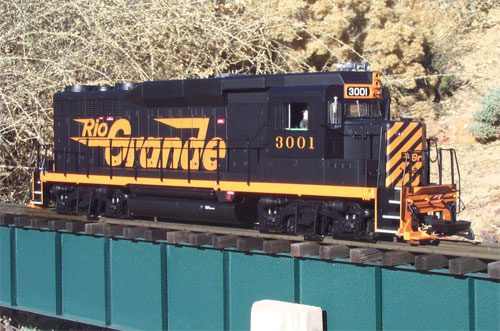
Marc Horovitz 1:29 scale, gauge-1 GP30USA TrainsPO?Box 100Malden MA 02148Web site: www.usatrains.comSee your local dealer for price and availability Plastic model of an EMD GP30; two motors; eight-wheel drive; four traction tires; directional lighting; fan-driven smoke unit; interior cab lighting; detailed cab interior; metal handrails; opening cab doors; hook-and-loop couplers installed, knuckles also supplied; engineer […]
Read More…
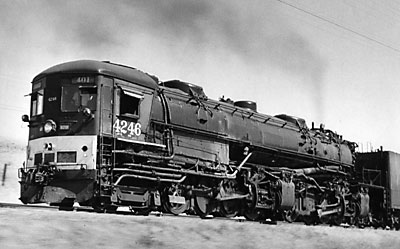
In 1928, the Northern Pacific went shopping for a locomotive that could eliminate doubleheading on the eastern end of its Yellowstone Division between Mandan, N.Dak., and Glendive, Mont. NP’s line through the Badlands had a series of long grades in both directions that made helpers impracticable and had long been one of the railroad’s operational […]
Read More…
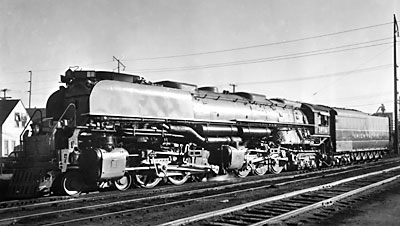
Better than most railroads, perhaps, the Union Pacific understood fast freight service. With an expansive network of lines spread across the western states, the railroad had to maintain fast schedules in order to remain competitive. Mindful of this, UP purchased the first heavy fast freight locomotives: unique three-cylinder 4-12-2s, built by Alco from 1926 to […]
Read More…
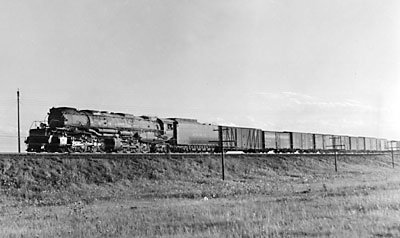
The proving ground for Union Pacific’s locomotives was a 75-mile portion of its busy main line between Ogden, Utah, and Evanston, Wyo. Eastward trains faced a climb through the Wasatch Mountains on grades of 1 percent or better. It was an expensive line to operate, particularly given UP’s practice of running big trains that typically […]
Read More…
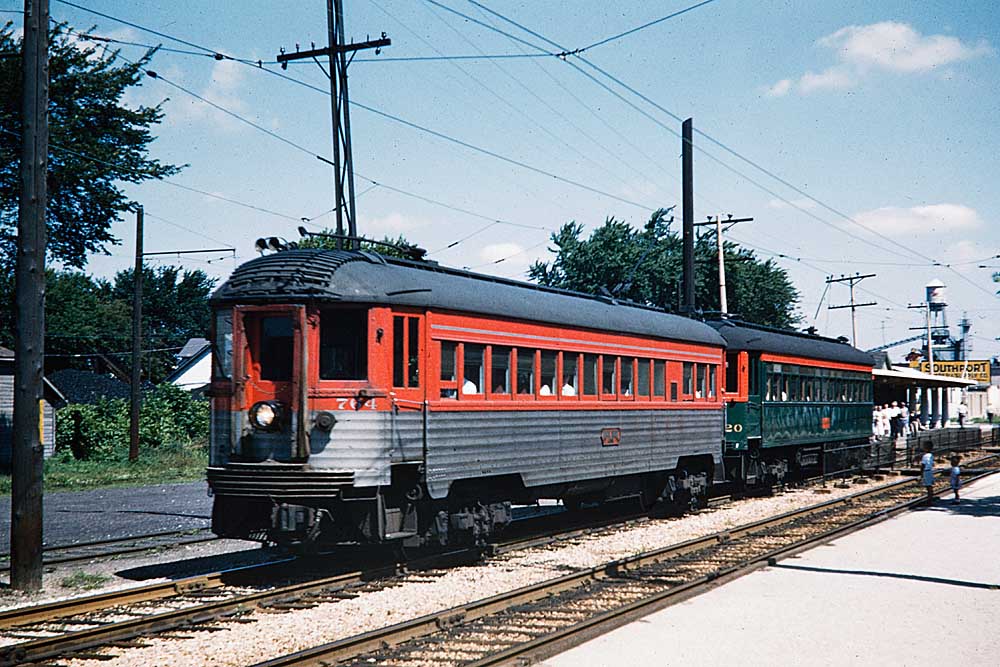
Interurbans Interurbans were electric railroads running between cities, often of lighter construction than “steam” railroads. They had their own rights of way through the countryside but usually ran in streets when in town, often sharing tracks with city streetcars. Trains consisted of one (sometimes more) cars. Passengers were their primary focus, though some lines came […]
Read More…
One enduring symbol of railroading’s past is the red-and-white diamond herald of the Railway Express Agency. Today one finds reminders of REA only at museums or old depots, but it once was a major element of the American scene – the FedEx of its day. Formation of the REA Express service is the prompt and […]
Read More…
Norfolk & Western’s Jawn Henry (named for the legendary “steel-drivin’ man”) was the last of a handful of U.S. experimental steam turbine locomotives, which appeared as a response to the diesel-electric locomotive’s overall superiority to conventional steam power. Turbines first came into use for steamships and power plants around 1900, and their advantages over reciprocating […]
Read More…

BNSF Railway Company Burlington Northern Santa Fe Corp. created on September 22, 1995, when BN bought AT&SF’s corporate Parent. Atchison, Topeka & Santa Fe Railway merged into Burlington Northern Railroad on December 31, 1996, and BN renamed Burlington Northern & Santa Fe Railway. Name shortened to BNSF Railway Company in 2005. Atchison, Topeka & Santa […]
Read More…

Canadian National Canadian National Railways was incorporated June 6, 1919, to operate several carriers that had come under governmental control owing to financial problems: Intercolonial (1913); National Transcontinental (1915); Canadian Northern (1918); Grand Trunk Pacific (1920); and Grand Trunk (1920). The Grand Trunk name survived on the U.S. portion of the Montreal-Portland (Maine) line until […]
Read More…
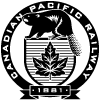
Canadian Pacific Railway Canadian Pacific, like its American counterpart Union Pacific, has the “right” name, one that endures, though CP is younger, having been incorporated in 1881 to build from near North Bay, Ontario, to the Pacific Coast at what is now Vancouver, B.C. Post-World War II subsidiaries that maintained some identity included Esquimalt & […]
Read More…
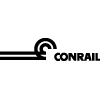
Conrail (Consolidated Rail Corporation) After the failure of Penn Central in 1970, the government formed the United States Railway Association in 1973 to develop a plan to save railroading in the Northeast. The result: Consolidated Rail Corp., which on April 1, 1976, took over the properties of PC and six smaller roads. On August 22, […]
Read More…
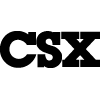
CSX Transportation CSX Corporation was formed on November 1, 1980. Subsidiary CSX Transportation absorbed Seaboard System Railroad on July 1, 1986, and Chesapeake & Ohio, the only corporate survivor of the Chessie System Railroads, on August 31, 1987. Conrail (Consolidated Rail Corporation) After the failure of Penn Central in 1970, the government formed the United […]
Read More…









